So, my friends, you have covered a lot of territory with LaRueSews quilting. Now what? I guess it’s really time to decide whether you want to hand piece or machine piece. Most of what I have talked about so far can apply to either technique. With a few exceptions, you can use a rotary cutter to cut many of the pieces needed for hand piecing, as well as machine piecing.
Here are a few questions that will help you decide if you are one of those few who want to do piecing by hand. Do you like to have a small project to take with you when you travel, or wait in the doctor’s office or while your child takes a music lesson? Do you enjoy using a needle and thread? Do you relax when you use them? Do you fall asleep in front of the television without something to keep your hands busy? Do you like to create small, delicate things with your hands? Hand piecing is for you!
Does it drive you crazy to thread a needle? (That little eye keeps moving all over the place) Is sitting still a problem for you? Do you want to get things done fast? Are you impatient to see the final product? Can you see the sewing machine better than a needle and thread? Maybe machine piecing is a better choice.
Hand piecing can be tedious for some people. However, some find it relaxing, as well as the most basic kind of quilt piecing. My husband’s mother, grandmother, and aunts thought that it wasn’t a “quilt” unless every stitch was not done by hand. His mother and aunts loved quilts and all other kinds of hand work. On one visit with them, we had a lengthy discussion on the subject of a certain quilt pattern, and whether it could or could NOT be pieced on a sewing machine. I really loved a particular pattern, though I have never learned the correct name for it. I decided that I needed to prove to myself that it could indeed be made on the sewing machine. That was more than a few years ago. The quilt is made with white quarter circles that when assembled with prints, make white circles all over. At the time, I didn’t feel like I could buy enough white fabric all at one time for the whole quilt. So, I bought it about a yard at a time, until I had enough to make the quilt. Like most early quilters, I used scraps for the rest of the block fabrics. I learned to my delight that I could indeed sew those little quarter circles into the curve of the print fabric. It can be a little tricky, but not nearly as hard as sewing a sleeve into a garment, though it is similar. I don’t actually remember if my mother-in-law or DH’s aunt ever saw that quilt, but it was my first real attempt at that kind of quilt. I was not a quilter at the time, so I sent the top to my sister, for my aunts and Mom to quilt. If anyone knows the correct name for this quilt pattern, please let me know. All the quilt blocks in these pictures are made with a similar technique, but they turn out so different. The blue block is a variation of the Drunkard’s Path.
Does anyone know the name of this quilt pattern?

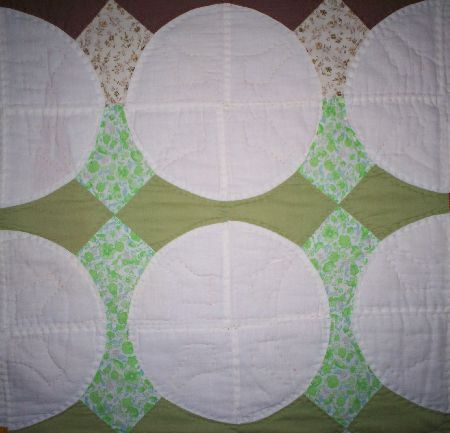
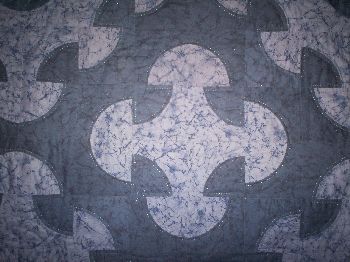
I haven’t come across many quilts that couldn’t be pieced either by hand or machine. However, I did take a class at one time that was definitely a hand pieced project. It’s a pretty tough pattern. I get it out from time to time and work on it a few weeks and then tuck it away again until I get the “itch” to work on it. I have about fifteen of forty or more blocks made. It has been more than ten years since I took the class. This block is one from that class.
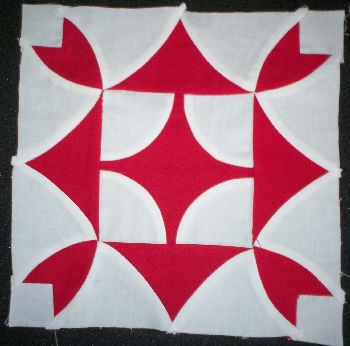
My main piece of advice if you decide to do hand piecing is, be precise. Being the meticulous person that I am when it comes to sewing, I am not pleased with an item I’ve made unless I’ve done it right. Although I don’t do a lot of hand piecing, I love this quilt enough to keep working at it. In the first I show two of the pieces, together with some plastic templates, cut in the shape of the pieces. They are cut and marked to show the stitching lines. Precision is the name of the game in this quilt. In the next picture, I have shown how to mark this kind of block pieces, evenly in quarter sections, to make an inside curve fit into the outside curve of the block pieces. It also shows how to hand stitch the pieces together. Be sure to mark the stitching lines clearly, but not so dark to show through. I have marked the lines darker to show them in the photo. I usually use my mechanical pencil for marking. Mark the corners clearly, match and pin the corners carefully so that the adjoining pieces will fit well. One thing that helps when marking the fabrics with templates is to use a sandpaper board beneath the fabric to keep it from slipping.
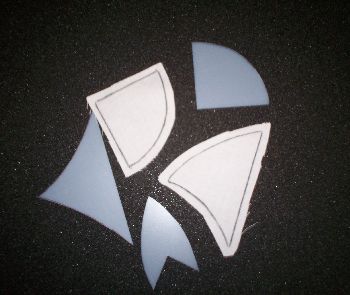
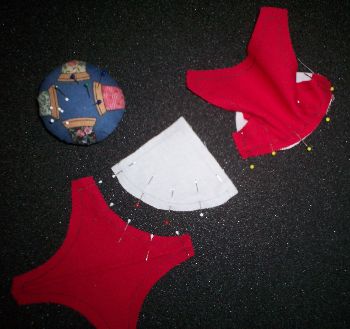
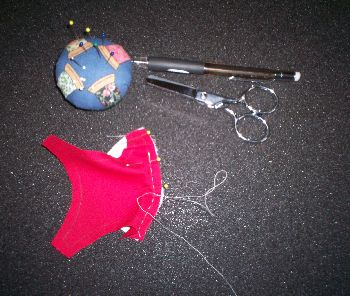
With this kind of pieced block, you need to pin carefully, matching up the lines on both sides of the stitching. Keep an eye on the back as well as the front, keeping the lines together. The back piece of fabric slips easily. Check both sides as you go. That’s a lot easier than taking out the missed stitches. Use whatever needle that suits you, but it’s best to use a fine needle. Make your stitches as small as possible. Hand piecing is not quite as sturdy as machine piecing, so the smaller the stitches, the longer the seams will hold. I use regular quilting thread when I do hand piecing because it is waxed, so it is a bit stiffer and stronger and it doesn’t tangle or twist like regular machine sewing thread. I don’t know if it is usual for your thread to twist while you are stitching, but it seems to be a problem for me. You can easily get the twisted thread straight by rolling the needle with your fingers in the opposite direction of the twist. Or you can hold the work in the air and let the needle and thread dangle. It will swirl itself and get that bothersome twist out of the thread.
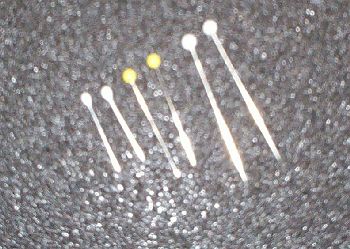
The last picture shows three straight pins. The short ones are called appliques pins. They are short, fine pins that work well for hand piecing and applique because they are less likely to catch the thread while you are stitching. They are only 3/4 inch long. The long pins are the ones I use for most of my sewing, they are long, with a glass ball tip that shows up well and they don’t get lost in the fabric as easily. I had a little dog at one time who loved to find them on the floor and hold them in her mouth. I have no idea what the attraction. I had to be careful or keep her out of the sewing room until she grew out of it. Emergency vet bills are not fun for me or the dog.
Hand piecing can be fun, if you like it. For me, it’s just a means to an end. The red and white quilt I have shown would be very difficult to sew by machine. That’s about the only reason I do hand piecing at all. It is similar to hand applique, since it entails cutting, marking and stitching small pieces. I love applique, but hand piecing, not so much. I do find that hand piecing leaves me a bit on edge, but applique is quite relaxing, and also a good take-along project.
If you decide to give hand piecing a try, I suggest that you start with a pretty simple block. Some people love to stitch tiny, even miniature quilts. I made a miniature quilt just one time, and found out that I just wasn’t that attracted to it. I guess I decided I wanted the faster results that come from piecing by machine. I think, as I read what I have written, that I may have talked all of you into making quilts only by machine. Please don’t walk away without at least a further look. You just may enjoy pushing that little needle, and believe me, when you are through, you will congratulate yourself on a job well done.
So far we have covered quite a few subjects related to quilting, but there’s still a way to go before it’s time to sleep under the stitches. I do have lots of other ideas, but if there is something you’d like me to talk about, Please leave your comments.
Stitches to you,
LaRue
PS Don’t forget your thimble.